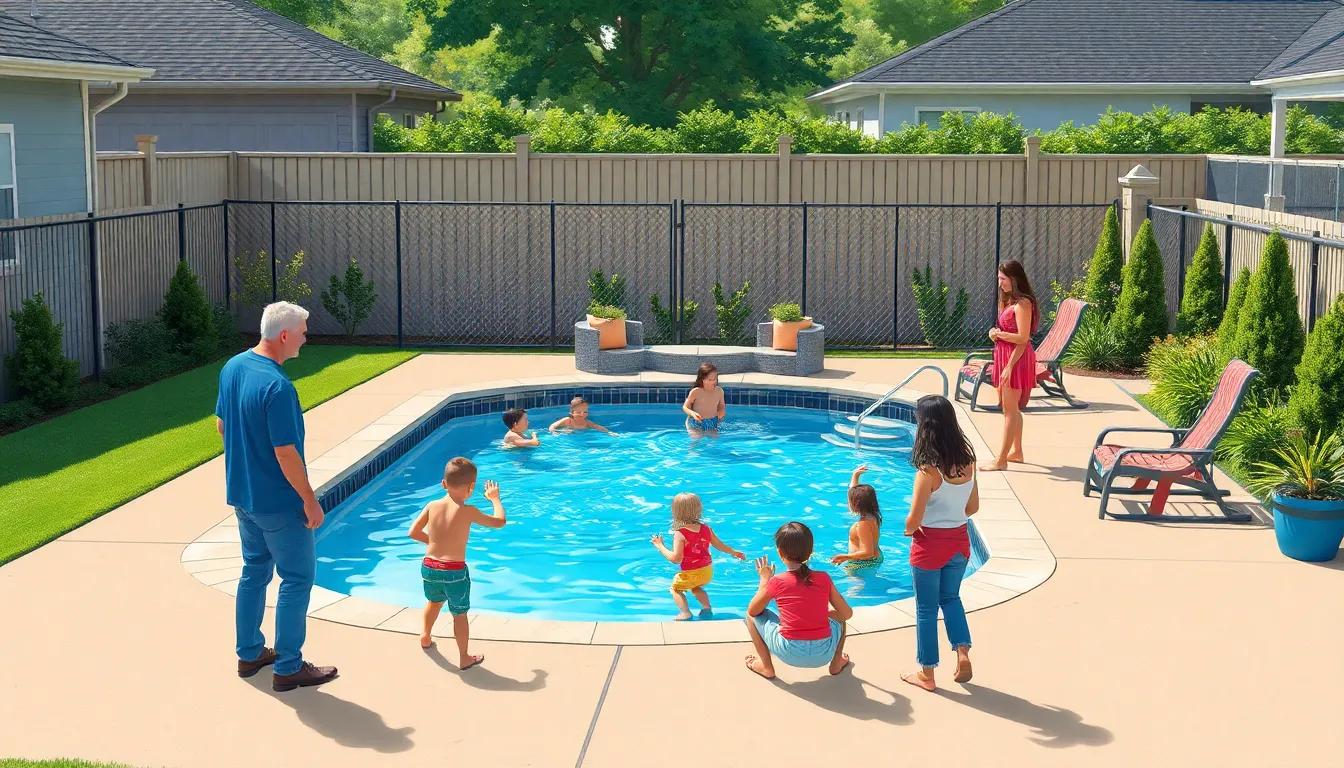Summer’s just around the corner, and that means pool parties, sunbathing, and the occasional cannonball contest. But before diving into the fun, it’s crucial to ensure that your backyard oasis is safe and sound. A pool safety inspection isn’t just a good idea—it’s a must. After all, no one wants to end up in a game of “who can find the nearest lifeguard” when they should be enjoying a refreshing splash.
Table of Contents
ToggleUnderstanding Pool Safety Inspection
Pool safety inspections serve as a crucial step in maintaining a secure environment. Focusing on various aspects of pool safety ensures enjoyable and risk-free experiences for all swimmers.
Importance of Pool Safety
Pool safety significantly reduces accidents and injuries. Regular inspections help identify potential hazards like faulty equipment or slippery surfaces. Furthermore, having a well-maintained pool promotes peace of mind for families and guests. Statistics show that drowning remains a leading cause of unintentional death for children aged one to four. Prioritizing pool safety can prevent such tragedies and create a family-friendly environment.
Key Elements of a Safety Inspection
A thorough safety inspection examines multiple components of the pool area. Inspecting barriers such as fences and gates ensures compliance with safety regulations. Evaluating pool alarms provides an extra layer of security. Assessments of the pool’s filtration system and water quality are essential for health reasons. Regular checks for proper signage, including depth markers, guide users about safe swimming practices. Overall, these key elements collectively contribute to a safer swimming experience.
Common Pool Hazards

Pool areas pose potential dangers that require attention to ensure safety. Identifying these hazards helps maintain a secure environment for all swimmers.
Slips and Falls
Wet surfaces around pools create opportunities for slips and falls. Roughly 60% of pool-related injuries stem from these incidents, often occurring on deck areas or entry points. To minimize risk, installing non-slip surfaces proves beneficial. Regular maintenance of decking surfaces helps prevent algae and debris accumulation, which can lead to accidents. Additionally, providing clear pathways to pool entrances and exits significantly enhances safety. Proper signage indicating wet areas also informs swimmers of potential hazards, supporting a safer swimming experience.
Drowning Risks
Drowning represents a severe risk, especially for unsupervised children. Data show that drowning ranks as a leading cause of unintentional death for children aged one to four. Effective barriers such as locked fences can prevent unauthorized access to the pool area. Consistent supervision remains crucial, particularly when children are in or near water. Installing pool alarms provides another layer of safety by alerting guardians to unauthorized entry. Educating families on CPR and water safety can prepare them for emergencies, ultimately reducing drowning incidents.
The Pool Safety Inspection Process
Conducting a pool safety inspection involves specific steps to ensure the environment is safe. This process includes thorough evaluations of various elements that directly impact swimmer safety.
Preparing for the Inspection
Gathering necessary documents is the first step for an effective pool safety inspection. Inspectors often review local regulations to ensure compliance. Scheduling the inspection in advance helps prevent delays, so individuals can prepare by cleaning the pool area and checking equipment functionality. Notifying all family members about the inspection dates ensures everyone is aware and ready for the assessment.
What Inspectors Check
Inspectors assess multiple components during the safety inspection. They examine barriers like fences and gates for proper locking mechanisms and structural integrity. Pool alarms receive close attention to ensure they activate appropriately. Additionally, experts evaluate the filtration system and analyze water quality to maintain safe swimming conditions. They inspect signage, making sure it clearly communicates rules and emergency information. Each check contributes to a comprehensive safety evaluation, ensuring all factors work together to safeguard swimmers.
Tips for Homeowners
Regular pool safety inspections focus on maintaining a secure swimming environment. Homeowners play a crucial role in ensuring that pools remain safe and enjoyable for everyone.
Routine Safety Checks
Routine safety checks enhance a pool’s safety and functionality. Inspecting barriers such as fences and gates at least once a month ensures they remain compliant with local regulations. Evaluating pool alarms regularly helps identify any malfunctions, and cleaning the filtration system contributes to maintaining optimal water quality. Conducting a visual inspection of the pool deck allows homeowners to spot potential slip hazards. Signs outlining pool rules and emergency procedures should receive attention too, ensuring visibility for all users. Frequent safety checks reduce the risk of accidents significantly, providing peace of mind during the swimming season.
Keeping the Pool Area Secure
Keeping the pool area secure requires diligent management and a proactive approach. Installing self-closing gates offers an added layer of protection against unsupervised entry. Using pool covers when the pool remains unused prevents accidental falls and ensures safety during colder months. Maintaining clear visibility around the pool facilitates better supervision, allowing caregivers to monitor children effectively. Implementing lockable storage for pool equipment keeps hazardous materials away from curious hands. By prioritizing secure barriers and practicing vigilant supervision, homeowners create a safer environment for their families and guests.
Ensuring pool safety is a vital step for any homeowner looking to enjoy a worry-free summer. Regular inspections not only identify potential hazards but also foster a culture of safety among family and guests. By actively maintaining barriers and equipment and educating loved ones on water safety, individuals can significantly reduce the risk of accidents.
Emphasizing routine checks and clear communication of safety rules creates a more enjoyable swimming experience. As families prepare for pool season, prioritizing these safety measures is essential for peace of mind and creating lasting memories in a secure environment.




